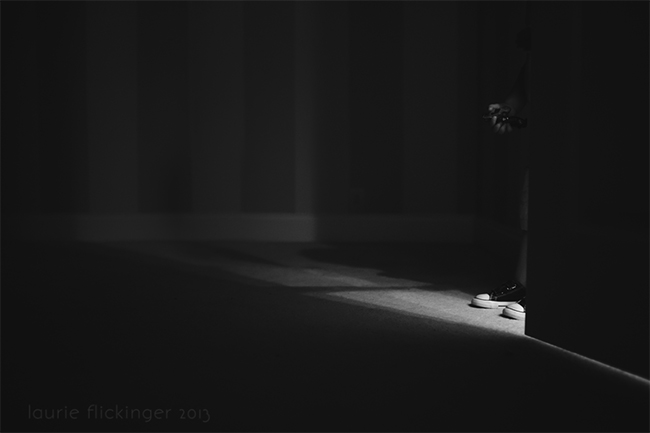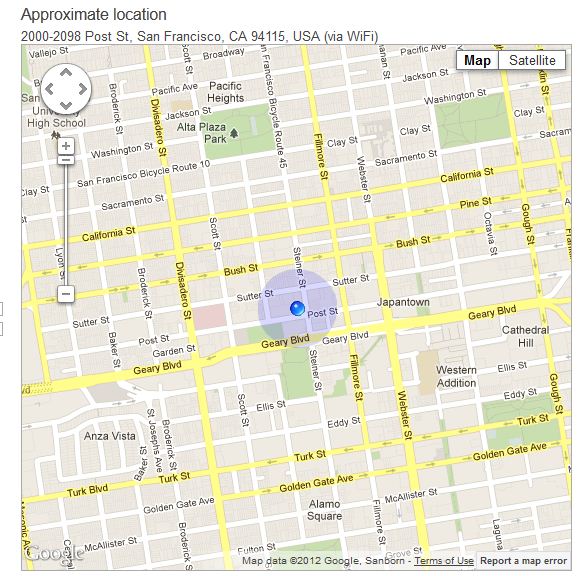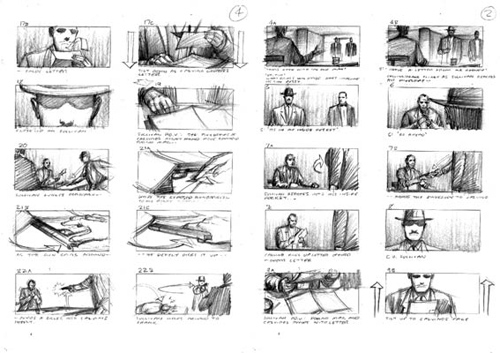Mise En Scene
Mise en scene is made up of lighting, body language and facial expression, setting, costume, hair and makeup, and iconography. It is important to have mise en scene in films because the audience are able to have a clearer understanding of the events and understand whether the events occurring have positive connotations or negative connotations through the use of the mise en scene elements, for example, if there is low lighting supported by non diegetic sound that creates tension and suspense for the audience, it allows them to predict that the events that are going to occur are going to be fearful and horrifying with the victims and protagonist lives at risk. Mise en scene also allows the audience to understand the representation of the characters through their costume, hair and makeup and their facial expressions and body language, for example, if a character wears an all black outfit with a mask the audience are able to understand that the character is likely to be an antagonist with negative intensions due to the negative connotations of black which symbolise death and danger. I believe it is important to think about the mise en scene, especially in thriller films because the audience must feel suspense and tension throughout due to the events, therefore the mise en scene should highlight suspense and tension through the elements, for example, if dangerous iconography such as guns and knives are used by the antagonist the audience will immediately react with suspense and will fear for the victim and protagonist. This is also supported by the other elements.
Lighting
 The lighting in the thriller opening will mainly consist of low lighting, top and under lighting supported by black and white colours. In the first shot when the professor is at his desk top and under lighting will be used allowing the audience to see the details clearly and understand that the protagonist is superior with positive intensions. However, when the camera shows him looking at the laptop screen, low key lighting will be used to demonstrate that the anti hero is in mentally unstable and is dangerous allowing the audience to understand and react with fear and tension. Furthermore, when the anti hero is in the mental institution low lighting will be used to support her feelings and personality which is currently mixed and will relate to her being in a dark place. When the camera switches from the anti hero to the flashbacks a white filter will be used to allow the audience to understand that the camera is switching to a flashback. During the flashbacks black and white colours will be used to symbolise that they are occurring in the anti hero's mind, black and white also contrast therefore relate to the anti hero's fragmented mind-set and her emotions.
The lighting in the thriller opening will mainly consist of low lighting, top and under lighting supported by black and white colours. In the first shot when the professor is at his desk top and under lighting will be used allowing the audience to see the details clearly and understand that the protagonist is superior with positive intensions. However, when the camera shows him looking at the laptop screen, low key lighting will be used to demonstrate that the anti hero is in mentally unstable and is dangerous allowing the audience to understand and react with fear and tension. Furthermore, when the anti hero is in the mental institution low lighting will be used to support her feelings and personality which is currently mixed and will relate to her being in a dark place. When the camera switches from the anti hero to the flashbacks a white filter will be used to allow the audience to understand that the camera is switching to a flashback. During the flashbacks black and white colours will be used to symbolise that they are occurring in the anti hero's mind, black and white also contrast therefore relate to the anti hero's fragmented mind-set and her emotions. - The professor will have an upright posture sitting by a desk with a curious facial expression demonstrating that he is concerned about the anti hero and is unable to understand her current mental state. This is conventional to a thriller film as it is expected for the protagonist to experience confusion making the audience react with suspense and tension as they question the protagonists abilities.
- When the anti hero is first perceived in the mental institution she will have unstable body language followed by mixed facial expressions highlighting that she is demented and is not in control of her mind. However, during the first flashback the anti hero will have a relaxed body language demonstrating that she is content and is happy in her lovers presence, which will be supported by a loving facial expression symbolising that she is extremely happy. However, her happiness is short lived when she is caught by the antagonist causing her to react with a straight and mysterious facial expression worrying the audience as they can predict that the anti hero will act on what she has seen. During the second flashback, when the anti hero discovers her pregnancy she will have a tearful and happy facial expression demonstrating that her pregnancy is unexpected but also pleasant news for her. In the final flashback when she kills the antagonist she will have straight face suggesting that she has no emotions and then confidently kills the antagonist with a straight upright posture to symbolise her serious attitude. When the anti hero is then approached by the antagonist she has a fearful and frightening facial expression followed by a slouched posture as she moves away from the antagonist at a fast pace.
- The antagonist has still body language with a shocked facial expression during the flashbacks as she is unable to believe what she is experiencing and is shocked by the revelations, when the anti hero is about to commit her murder the antagonist is unable to move as she is in shock and freezes before being shot. When she enters the anti hero's room she will have an upright and straight posture demonstrating that she is serious causing fear and anticipation for the audience. This will be supported by a emotionless facial expression as the antagonists face lacks emotion demonstrating that she is determined to seek revenge.
Setting
The film will begin in a white room used as the professors
office showing him sitting by a desk observing the anti hero's behaviour, the colour white also highlights that the professor is innocent and is the protagonist of the film. This causes the audience to respond with hope and confidence as they trust the protagonist and have faith that he will be able to solve the

 problem. Furthermore, the anti hero will be in an empty white room symbolising a metal institution allowing the audience to understand that the anti hero is demented and is suffering from mental issues. The colour white also demonstrates that she is innocent however the size of the room will be small to highlight that she is not entirely innocent, only to the extent when her mind controls her actions. The audience react with suspense as they are intrigued to find out more about the anti hero and her past. Moreover, when the anti hero begins seeing flashbacks, the setting will vary, during the first flashback when the anti hero and her lover are intimate they will be on the street down an alley way to demonstrate that they are hiding something and do not want to be seen by the public. This setting is conventional to a thriller film as it connotes danger and mystery creating suspense and anticipation for the audience. The second flashback will be set in a bathroom as the anti hero identifies her pregnancy which is conventional to the situation. The final flashback will be set on a quiet road where the anti hero shoots the antagonist, this is conventional to the thriller genre as it is expected for dangerous situations to take place in public places where the public can be harmed.
problem. Furthermore, the anti hero will be in an empty white room symbolising a metal institution allowing the audience to understand that the anti hero is demented and is suffering from mental issues. The colour white also demonstrates that she is innocent however the size of the room will be small to highlight that she is not entirely innocent, only to the extent when her mind controls her actions. The audience react with suspense as they are intrigued to find out more about the anti hero and her past. Moreover, when the anti hero begins seeing flashbacks, the setting will vary, during the first flashback when the anti hero and her lover are intimate they will be on the street down an alley way to demonstrate that they are hiding something and do not want to be seen by the public. This setting is conventional to a thriller film as it connotes danger and mystery creating suspense and anticipation for the audience. The second flashback will be set in a bathroom as the anti hero identifies her pregnancy which is conventional to the situation. The final flashback will be set on a quiet road where the anti hero shoots the antagonist, this is conventional to the thriller genre as it is expected for dangerous situations to take place in public places where the public can be harmed.
office showing him sitting by a desk observing the anti hero's behaviour, the colour white also highlights that the professor is innocent and is the protagonist of the film. This causes the audience to respond with hope and confidence as they trust the protagonist and have faith that he will be able to solve the

 problem. Furthermore, the anti hero will be in an empty white room symbolising a metal institution allowing the audience to understand that the anti hero is demented and is suffering from mental issues. The colour white also demonstrates that she is innocent however the size of the room will be small to highlight that she is not entirely innocent, only to the extent when her mind controls her actions. The audience react with suspense as they are intrigued to find out more about the anti hero and her past. Moreover, when the anti hero begins seeing flashbacks, the setting will vary, during the first flashback when the anti hero and her lover are intimate they will be on the street down an alley way to demonstrate that they are hiding something and do not want to be seen by the public. This setting is conventional to a thriller film as it connotes danger and mystery creating suspense and anticipation for the audience. The second flashback will be set in a bathroom as the anti hero identifies her pregnancy which is conventional to the situation. The final flashback will be set on a quiet road where the anti hero shoots the antagonist, this is conventional to the thriller genre as it is expected for dangerous situations to take place in public places where the public can be harmed.
problem. Furthermore, the anti hero will be in an empty white room symbolising a metal institution allowing the audience to understand that the anti hero is demented and is suffering from mental issues. The colour white also demonstrates that she is innocent however the size of the room will be small to highlight that she is not entirely innocent, only to the extent when her mind controls her actions. The audience react with suspense as they are intrigued to find out more about the anti hero and her past. Moreover, when the anti hero begins seeing flashbacks, the setting will vary, during the first flashback when the anti hero and her lover are intimate they will be on the street down an alley way to demonstrate that they are hiding something and do not want to be seen by the public. This setting is conventional to a thriller film as it connotes danger and mystery creating suspense and anticipation for the audience. The second flashback will be set in a bathroom as the anti hero identifies her pregnancy which is conventional to the situation. The final flashback will be set on a quiet road where the anti hero shoots the antagonist, this is conventional to the thriller genre as it is expected for dangerous situations to take place in public places where the public can be harmed. - The protagonist will be formally dressed in a white shirt and tie followed by a lab coat and glasses to symbolise that he is professor and his intelligence will further be highlighted through his messy short hair. The use of the colour white symbolises the professors innocence and outlines his good intensions.
- The anti-hero will be dressed casually in a grey top and jeans, the use of the colour grey will be to symbolise the anti hero's split personality and suggest that although she is currently innocent and a victim of her own mind it demonstrates that she may have committed something in the past making her lack innocence. She will also have frizzy long hair to demonstrate that she is demented supported by a lack of makeup, with only dried mascara running down her face. During the flashbacks she will also wear light coloured casual clothing supported by straight hair demonstrating her knowledge and symbolising her innocence, however in the final flashback when she commits the antagonists murder she will wear black clothing with her hair covered by a hood connoting danger and mystery causing the audience to react in tension and fear the anti hero.
- The antagonist will wear formal light coloured clothing during the flashbacks to show that she is sophisticated and innocent as she is doing day to day routines, this allows the audience to relate to the antagonist. Her hair will be straightened however will have a design in it to further suggest that she is innocent. However, when she enters the anti hero's room she will have a dirty white dress on symbolising her lack of innocence and purity, which demonstrates her immediate change and makes he audience fear her as they are able to predict what she may do. She will also have long straight hair which will cover her face hiding her identity from the audience until she approaches the anti hero. When her face is discovered by the audience, they will be in shock as she will have a pale face with her eyes covered in blood.This image of the antagonist will cause the audience to respond with suspense and tension as they await for her to proceed and act aggressively.
- The lover will wear causal clothing consisting of a top and jeans which will be of dark colours suggesting that he lacks innocence and is guilty of coming adultery as he has an affair with the anti hero. He will also have short neat hair making him conventional to an attractive lover.
Iconography

When the protagonist is first shown, he is surrounded by iconography including a desk, laptop, stationary and coffee which demonstrates that the protagonist is knowledgeable and is observing the anti hero's behaviour, taking notes. The laptop is the first thing that is used to allow the audience to see the anti hero therefore has importance in the scene. There are also images on the wall behind the professor highlighting that she is his main concern that he is focusing on, trying to understand why and how she got into her current state. Furthermore, when the anti hero perceived there is a chair in her room used for her to sit on which is supported by a tray of food on the floor for the anti hero. The lack of iconography in the room suggests that the anti hero is being observed and is not entitled to being surrounded by lots of things that may distract her or cause her to react negatively. During the flashbacks the iconography will consist of a rose given to the anti hero by her lover which has connotations of love however it has a meaning of 'first love' which will evidently be false after the audience see the lovers wife. During the second flashback a pregnancy test will be used when the anti hero identifies that she is pregnant. Finally, during the final flashback a gun will be used by the anti hero to kill the antagonist creating fear and tension from the audience as they are unaware of what to expect. Using conventional iconography is important as it the audience expect to see iconography such as guns which create suspense and anticipation.
Conclusion
Overall, I have identified each element of mise en scene that I want to include in my thriller. My group members and I have discussed each element in detail and have ensured that our ideas are conventional to thriller genre creating suspense and anticipation from the audience. I will ensure I stick to my ideas and use them when creating my thriller opening by continuously referring back to the plans.































